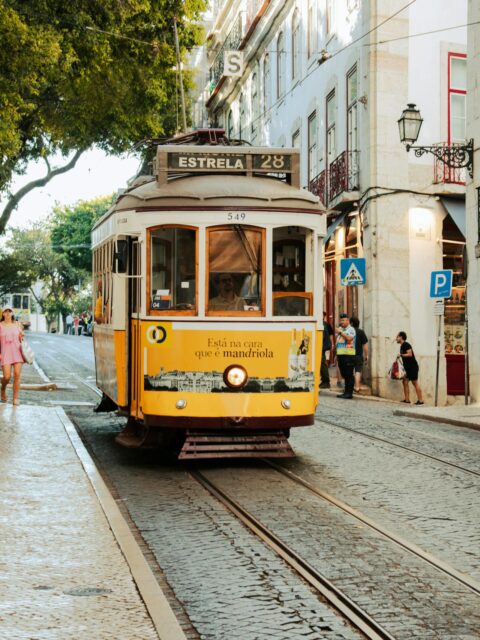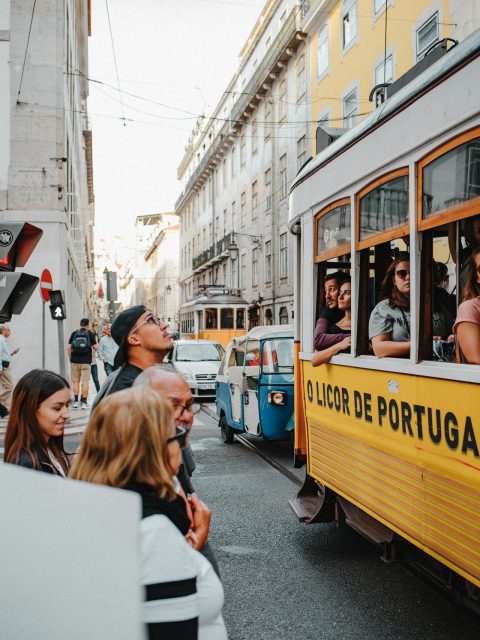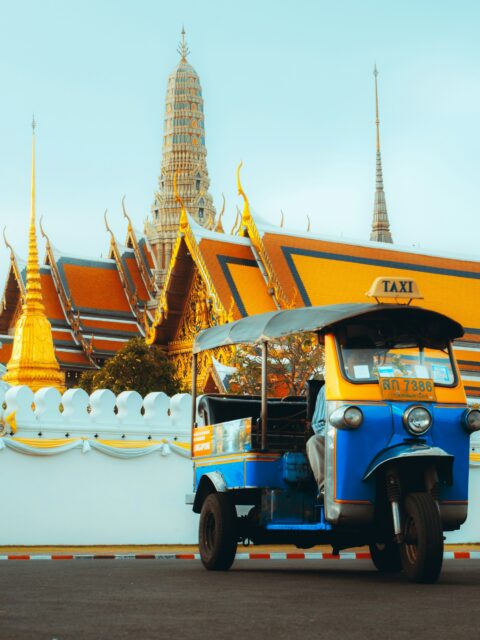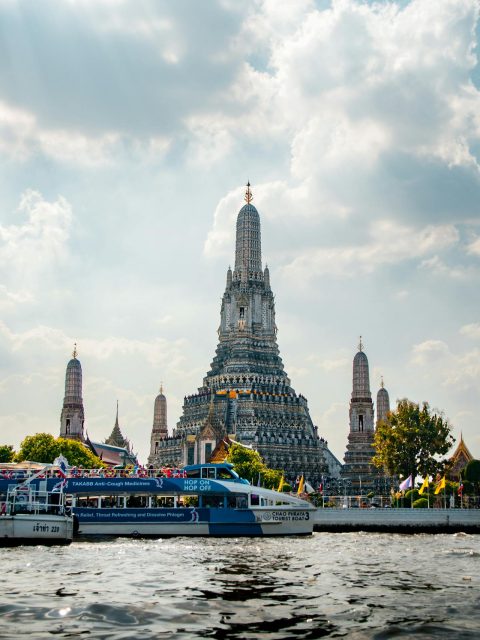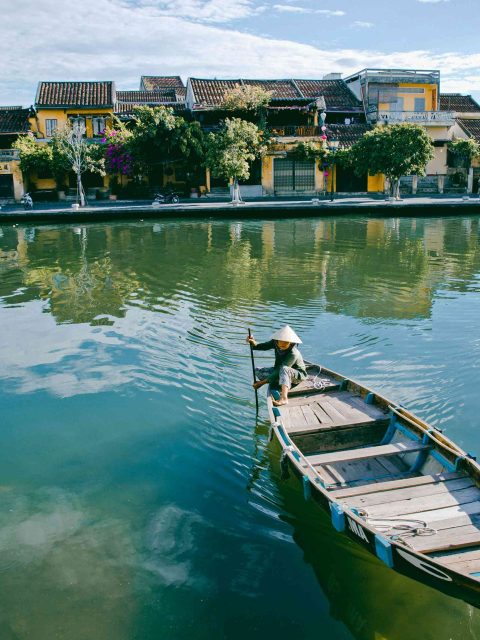Colombia Travel Itinerary 2 Weeks ( Complete Guide to Explore Colombia )
Colombia, once viewed as off-limits for many travelers, has transformed into a must-visit destination in South America. In recent years, this vibrant country has emerged as a true gem, offering unique cultural experiences and breathtaking landscapes. Given Colombia’s vast diversity, it can be challenging to design the perfect travel plan. In this post, I will guide you through a carefully curated Colombia travel itinerary 2 weeks, helping you explore the best of what this incredible country has to offer.
Chapters
- Ultimate Colombia 2-Week Itinerary
- Days 1-3 of the Colombia Itinerary: Salento
- Days 4-5: Travel from Salento to Jardín
- Day 6: Medellín
- Day 7: Day Trip to Guatapé and El Peñol
- Day 8: Travel from Medellín to Santa Marta
- Day 9: Hike Tayrona National Park
- Day 10: Travel to Cartagena
- Days 11-12: Explore Cartagena
- Day 13 – Travel by Plane to Bogotá
- Day 14: Colombia Itinerary Ends, Sadly Fly Home
Ultimate Colombia 2-Week Itinerary
After spending time in Salento, Jardín, Medellín, Guatapé, Tayrona National Park, Cartagena, and Bogotá, I had the chance to discover some of the best places that should definitely be on any Colombia travel itinerary. While there are many other hidden gems, I chose these locations for my Colombia travel itinerary 2 weeks because they truly captured my interest, and their popularity is well-deserved.
Here’s my suggested itinerary for an unforgettable 2-week journey through Colombia. You can certainly adjust the order to fit your travel style, but this plan worked perfectly for us and showcases the best highlights of Colombia. Planning this trip felt a bit overwhelming at first, so I hope this guide helps make it easier for those in a similar situation.
Days 1-3 of the Colombia Itinerary: Salento
For coffee enthusiasts, Salento is nothing short of paradise. Nestled in Colombia’s renowned “coffee triangle,” this charming town is one of the most scenic places you can visit. Picture a quaint, old-fashioned town with Spanish colonial vibes, but with a modern twist, full of vibrant cafés and gourmet restaurants. It’s the perfect blend of tradition and contemporary culture. Salento offers a unique experience for travelers seeking both stunning landscapes and a rich coffee culture. Don’t forget to check out my in-depth Salento guide in another post!
Getting to Salento, Colombia
Salento is nestled in the lush green mountains, roughly a 6-9 hour drive from Medellín or Bogotá. Nearby, you’ll find the small cities of Pereira and Armenia, which are great options if you’re flying in. You can catch a flight or take a bus from Bogotá, Cartagena, or Medellín to one of these cities, then continue your journey to Salento by bus or taxi.
Domestic flights in Colombia are generally affordable, with the main airlines being Avianca, Latam, and Clic. Just be sure to double-check what’s included in your fare, as some budget airlines have strict baggage policies and additional fees for certain services.
Things to do in Salento, Colombia
1. Visit the Cocora Valley
Cocora Valley is one of the most breathtaking places you’ll ever visit, and no trip to Salento would be complete without it. As part of Los Nevados National Natural Park, this valley is home to Colombia’s national tree, the towering wax palm, which can be seen in abundance here. It’s a popular spot for hiking enthusiasts. The weather tends to be mild but humid, with frequent rain, so make sure to pack accordingly. A good raincoat will be your best friend for this adventure.
2. Visit a Coffee Farm in Salento
Salento is situated in Colombia’s coffee triangle, one of the most important coffee-producing regions in the world. This area offers a variety of coffee tours that allow you to experience the coffee-making process firsthand. We took the Finca El Ocaso tour and absolutely loved it. You can find many other tours in the region to suit your preferences, and I highly recommend doing some research to pick the best one for your trip.
Eat in Salento
Salento may surprise you with its fantastic food scene, paired with an equally incredible coffee culture. While much of the best coffee grown in Colombia is exported, you can still find some outstanding cafés that serve high-quality coffee and offer a welcoming atmosphere.
Best Restaurants in Salento:
Salento boasts a variety of unique and fun dining options, ranging from traditional local dishes to international flavors.
- Café Jesús Martín – My favorite café in Salento. The coffee is top-notch, and the decor creates a cozy vibe.
- Deliciosas Empanadas Venezolanas – A must-try spot for delicious Venezuelan empanadas.
- Coco Bowl – Perfect for fresh, healthy, and flavorful meals.
- Bernabé – A great choice for dinner with a relaxed atmosphere. We had one of the best meals here during our time in Colombia. It’s both affordable and high in quality.
- Acaime – A quirky outdoor restaurant located on the outskirts of town.
- El Rincón de Lucy – A small, authentic restaurant on the main street of Salento, popular among locals for traditional Colombian dishes.
Where to Stay in Salento, Colombia
My goal is to help you create a balanced and rewarding itinerary for your 2-week trip to Colombia. Given that Colombia is quite affordable, I’ve highlighted what I believe to be some of the best mid-range to upper-range accommodations. There are also some amazing eco-lodges and hostels just outside of town for those looking for a unique stay.
- Hotel El Mirador del Cocora – This might feel like a bit of a splurge depending on your budget, and while the rooms are somewhat dated, the views are unbeatable. It’s likely the best view in town.
- Hotel Salento Plaza – One of the most highly-rated hotels in town. It’s well-priced, centrally located, and offers great amenities.
- Hotel El Jardín – A colorful and charming hotel in the heart of town with excellent reviews and very reasonable prices.
- Hotel Salento Real – An authentic, beautiful hotel that’s also well-priced and located in a great spot. I would’ve stayed here if it hadn’t been fully booked!
- Lumbre Glamorous Camping – If you’re interested in glamping, don’t miss this unique and stunning experience. We left our luggage at our previous hotel and brought only a small backpack for our night at Lumbre. The site offers a private waterfall hike, a restaurant, beautiful views, and it’s just minutes away from the Cocora Valley.
Days 4-5: Travel from Salento to Jardín
Day 4 marks the start of an exciting, albeit adventurous, journey from Salento to Jardín. I could easily write a whole post dedicated to the experience itself. To put it simply, it’s a full day of travel involving three bus rides, the last one being on a rickety open bus with wooden bench seats. This bus winds its way through lush, mountainous terrain on a narrow dirt road at a slow 20 mph pace, finally reaching Jardín after dark. Alternatively, you can reach Jardín from Medellín in around 4 hours by bus if you prefer a more modern travel experience. This route would mean heading from Salento to Medellín first, then backtracking to Jardín.
But for us, the challenging journey was part of the adventure we wanted for our Colombia travel itinerary, and I’m glad we chose this path. After a long day on the road, you might wonder if the effort to get to Jardín was worth it. However, by morning, all doubts will fade when you take in the charm and vibrant colors of this picturesque town.
Things to do in Jardín, Colombia
One of the best things about planning your own Colombia travel itinerary is that you can tailor it to your preferences. Do a little research, and choose the activities that excite you the most. Jardín, though small like Salento, has its own unique charm. In my opinion, its central square is even more beautiful. The stunning church stands proudly at the heart of the town, surrounded by vibrant flowers and colorful buildings. Many of these buildings house quaint little restaurants, where local cowboys gather in the morning to enjoy coffee. Unlike Salento, Jardín feels a bit quieter, with fewer tourists, offering a more tranquil experience.
Take the Cable Car La Garrucha
For a quick and fun adventure, head to the southern end of Calle 12 in Jardín. There, you’ll find a small booth selling tickets for La Garrucha, a rickety yellow cable car. This short ride takes you up to a scenic viewpoint where you’ll find a restaurant, tables, and some lovely views of Jardín. It’s a simple and budget-friendly activity that doesn’t take much time but offers beautiful scenery.
La Cueva del Esplendor
La Cueva del Esplendor is a fascinating cave with a waterfall cascading through an opening in its ceiling, creating a stunning visual. Unfortunately, with limited time in Jardín, we didn’t get a chance to visit. You can either embark on a long hike from town or opt for a guided tour by Jeep or horseback. It’s about a half-day excursion. Reviews on TripAdvisor have been mixed, as access to the cave has sometimes been restricted. However, as of the time of writing, it’s open to visitors again.
People Watching and Coffee Drinking in the Square
Jardín’s central square is one of the most picturesque I’ve ever seen, making it the perfect spot for people watching. Most of the visitors here are Colombian or South American, with a few backpackers from Europe and Canada. Surrounding the square are food stands and restaurants, and the church at the heart of it is simply breathtaking. It’s also a great place to strike up a conversation with locals and learn more about their town.
Where to Eat in Jardín, Colombia
If there’s one place you absolutely must visit in Jardín, it’s Café Macanas. Located just to the left of the church entrance, this charming café offers some of the best desserts, coffees, and smoothies in town. The atmosphere is undeniably picturesque and cozy—trust me, you’ll want to take a few photos while you’re there. Their alfajores cookies and blackberry smoothies are to die for. When ordering one of these refreshing smoothies, you can ask for “jugo” (juice) and specify either “con agua” (with water/ice) or “con leche” (with milk). Blackberry, or “mora” in Spanish, was our personal favorite, and we couldn’t stop ordering them throughout Colombia!
The open-air seating at Café Macanas also provides a fantastic view of the beautiful church.
For dinner, I highly recommend Café Europa. Yes, it’s Italian food in Colombia, but their pizza is top-notch. If you’re looking for a break from traditional Colombian cuisine, this is the place to go. It’s a small restaurant with a great reputation, often attracting a line of people waiting to get in.
If you have a sweet tooth, Dulces Del Jardín is a local candy shop offering a variety of sweets, jellies, and pastries. It even has a cute potted plant wall, though I’d still say Café Macanas edges it out for the overall experience.
For vegans and vegetarians (or anyone, really), Consulado Vegetal is highly recommended and has excellent reviews.
Where to Stay in Jardín, Colombia
Jardín offers a wide range of affordable and charming hostels and hotels, making it hard to list them all. However, here are some great options based on their location, reviews, and amenities.
For a central location right on the town square and private room options around $40 per night, Fami Hotel Vive Jardín is a solid choice with excellent reviews.
If you’re looking for something a bit further from the town center, surrounded by vibrant gardens, both Hostería El Paraíso and Casa Hotel Portón Campestre are stunning options that offer tranquility and colorful settings.
For those looking for a touch of luxury, Casa Passiflora Hotel Boutique is currently one of the highest-rated hotels in Jardín, although it’s also one of the most expensive. This is where we chose to stay during our time in Jardín, and it was worth every penny. The hotel is beautiful, with a lovely outdoor jacuzzi and just a short walk from the town square. The cozy little on-site restaurant serves a delicious breakfast included in your stay.
Day 6: Medellín
Begin your day by traveling from Jardín to Medellín via bus. Thankfully, this trip is much simpler compared to the journey from Salento to Jardín. There’s one bus station in Jardín with multiple buses running to Medellín each day. If you have a set itinerary, I recommend purchasing your ticket a day or two in advance, just in case they sell out. The fare is about $11 USD, and the ride takes around 3 hours. Once you arrive at the Terminal Medellín del Norte (the north bus terminal), you can either take a taxi or a local bus to your hotel.
Initially, I almost considered skipping Medellín since 2 weeks in Colombia felt like a tight timeline. However, after binge-watching the Narcos series, I knew I had to include it in our itinerary. Known as the “City of Eternal Spring,” Medellín completely took me by surprise with its beauty. Nestled in lush green mountains, the city offers breathtaking views from all angles. For months leading up to the trip, I had been mispronouncing the name. In case you’re wondering, the correct pronunciation emphasizes the last syllable, and the double L’s are pronounced like a “Y” or “J” sound. It’s “me-de-yeen” or “me-de-jeen” though Spanish speakers say it with much more grace than I ever could!
What to Do in Medellín
Medellín was once infamous for being one of the most dangerous cities in the world. However, thanks to innovative urban development projects and forward-thinking leadership, Medellín has made a remarkable transformation, slowly mending its past and building a brighter future.
Take a Pablo Escobar and Comuna 13 Tour
A visit to Medellín wouldn’t be complete without exploring the neighborhood of Comuna 13. Once considered one of the most violent areas in the world with alarmingly high crime rates, today it’s a symbol of resilience. Walking through its streets, you’ll see children playing, colorful murals covering the walls, and a lively atmosphere that has drawn tourists from all over.
Since we had a free afternoon upon arriving in Medellín, we opted for a private tour with Transporter Medellín, which I had booked in advance. Our guide was fantastic—he picked us up at our hotel, made a quick stop for some street food since I was starving, and then we were on our way.
The tour kicked off by visiting some of the most notable historical sites associated with Pablo Escobar. Having watched the Narcos series before our trip, we were fascinated to see these places in person. We visited Pablo’s former residence, the location of his death, his final resting place (alongside some of his closest friends and family members) at the cemetery, and ended our tour by strolling through Comuna 13. The guide shared powerful stories about the neighborhood’s troubled past and its ongoing transformation into the vibrant community it is today.
Where to Stay in Medellín
The most popular neighborhood for tourists and expats is El Poblado, though Laureles is also a favorite. For a great value in Medellín, consider staying at Hotel Du Parc Royal. We stayed here and found it to be in a fantastic location with a quiet atmosphere. The hotel is comfortable, offers a complimentary breakfast, and even has a sauna. Plus, there are plenty of restaurants within walking distance, making it a convenient choice.
Other excellent options include Celestino, Sites, and Loma Verde, all known for their good prices and value.
If you’re looking for a hostel, Vibes is a great option with a lively atmosphere.
For those seeking a stylish hostel or an affordable private room, Los Patios Hostal Boutique has received stellar reviews and is often considered one of the best.
If you’re after more upscale accommodations, check out the Marriott Medellín Hotel or Hotel Poblado Plaza. There are many great places to stay in Medellín, so you’re sure to find something that suits your preferences.
On a side note, if you’re in El Poblado, I highly recommend Café Zorba. Their hummus and pita bread might just be the best I’ve ever had. And if you’re craving a burger, definitely check out Chef Burger; their food is delicious.
Medellín is quickly emerging as one of South America’s most progressive cities, known for its openness and diversity. Be sure to check out a great guide to the gay scene in Medellín for more information.
Day 7: Day Trip to Guatapé and El Peñol
This was probably one of my least favorite places we visited in Colombia, although part of that could be because I wasn’t feeling well that day. We visited as a day trip from Medellín, and I found it quite touristy and crowded. If you have an extra day, I think staying overnight in Guatapé would be a much better experience. Getting to see the colorful and charming town in the evening, when most tourists have left, or early in the morning would likely be far more enjoyable.
There are plenty of day trips and tours that take you to climb the big rock of El Peñol and explore the nearby town of Guatapé. However, it’s actually quite easy and cheaper to go on your own, and I personally found it more enjoyable than following a group. So, unless you’re someone who enjoys group tours, which is perfectly fine, I’ll explain how to get there independently.
Getting from Medellín to Guatapé and El Peñol
To get to Guatapé and El Peñol, you’ll first need to head to the Terminal del Norte in Medellín. We took a taxi, which was inexpensive. At the time of writing, once you arrive at the station, head down to the first floor where you’ll find two companies at ticket booths 9 and 14 selling tickets for the same price, with buses departing every hour. You can choose between La Piedra (if you want to climb El Peñol first) or Guatapé (if you’d prefer to visit the colorful town first). It’s slightly cheaper to buy a ticket to La Piedra. After passing through security, wait at the designated ramp indicated on your ticket to board the bus. The ride takes about two hours.
Once you’re dropped off, you can either walk up a steep hill or pay a small fee for a tuk-tuk to take you to the base of the rock. I opted for the tuk-tuk, considering I’d already have to climb the winding stairs to the top of El Peñol. After purchasing your ticket at the booth, you can start the climb. It’s slow and crowded, especially around 10 am, and the narrow stairs make it difficult to pass slower climbers until they move aside.
Reaching the top doesn’t take as long as expected, and once you’re there, you’ll find snacks, beautiful views, and plenty of people. The view of the unique lake is impressive, and I’m glad we made the climb, though it wasn’t the most breathtaking sight.
After the climb, you can take a 10-minute tuk-tuk ride to Guatapé and explore the charming town. We stumbled upon a small family-run kitchen converted into a restaurant on a quiet backstreet, which turned out to be our favorite meal, but there are plenty of restaurants, especially along the lake road.
One of the most popular activities in Guatapé, aside from wandering around and admiring the quaint town, is taking a boat tour on the lake. We were especially tempted to visit one of Pablo Escobar’s old mansions but decided to skip it in the end.
At the end of the day, you can take the bus back to Medellín for dinner, or consider staying the night in Guatapé and heading back the next day. If you’re looking for something modest yet charming in town, consider Hotel Bahia. For more privacy, nature, and stunning lake views, check out La Pausa, which offers unique cabin rentals.
Day 8: Travel from Medellín to Santa Marta
Medellín has two airports, so be sure to check which one you’re flying out of. If you’re heading to the larger José María Córdova International Airport, keep in mind that it’s a long but scenic drive from Medellín, typically taking about an hour. Taxi fares are affordable and usually fixed, so it’s a good idea to know the rates in advance or use Uber for convenience.
The flight to Santa Marta takes just over an hour. Although there’s supposedly a Yellow Fever vaccination requirement when arriving in Santa Marta, as well as for entering Tayrona National Park, no one asked us about it when we arrived, despite weeks of stressing over getting the vaccine for Chris. While it’s officially “recommended,” you might not be asked for proof.
Santa Marta itself doesn’t have the best reputation among travelers. We met a couple of girls from Canada who were robbed at gunpoint on the beach, and many other travelers advised us to skip the town altogether. Minca, a small jungle village near Santa Marta, is popular with backpackers, but with our limited time, we decided to skip it as well.
If your main goal is to hike in Tayrona National Park, you can stay anywhere in the area and catch a bus to the park. There are a few hotels and hostels closer to the park entrance, so you don’t necessarily have to stay in the city of Santa Marta. We chose to stay at Villa Maria Tayrona, a beautiful and secluded hotel about an hour’s drive from the airport. It’s reasonably priced, has its own restaurant and pool, and is just a 5-minute drive to the park. If you’re looking for that “Jane of the Jungle” experience, this is a great option.
For a beachfront, rustic hut experience, consider Playa Pikua Ecolodge, which is only about 15 minutes from the park entrance.
If you prefer luxury accommodations and want to be very close to the park entrance, Villa Playa Los Naranjos is an excellent choice.
Day 9: Hike Tayrona National Park
Tayrona National Park is home to some of the most iconic photos of Colombia, particularly those of the beach at Cabo San Juan. As a protected area, the entrance fee is relatively high by Colombian standards, around $22 at the time of writing. Many visitors choose to camp at one of the numerous campgrounds, sleeping in tents or hammocks. If you’re looking to splurge, you can stay at the Ecohab huts within the park.
It’s best to get an early start from your hotel. My personal goal is always to arrive at popular, photogenic spots before the crowds. You can take public buses or collectivos (shared taxi vans) from Santa Marta or the hotels near the park. I believe you can now buy park tickets online through their new website, though it’s a bit confusing. I’d recommend sending an email ahead of time to clarify any details. Be aware that the park has entry limits and closure dates, so check those in advance. You might still need a photocopy (or digital copy on your phone) of your passport.
When you arrive, you’ll need to watch a short informational video about the park’s rules before receiving a wristband. Once you’re inside, you can either pay a small fee to take a shuttle to the start of the hiking trail or walk along the road. Personally, I chose the shuttle to save my energy and time (about an hour). The hike itself isn’t overly difficult, though the trail can be rocky and uneven, so hiking shoes are recommended. Trust me, you’ll be grateful for comfortable shoes. Flip-flops are a no-go. I wore Teva sandals, and they worked well. The trail goes through cycles of ups and downs, so you won’t encounter any extended steep climbs. You can also ride on horseback, though I personally felt that the horses were overworked. That said, if you’re camping and carrying heavy packs, using a horse could be a good option.
Your first glimpse of the coastline will reveal a stunning beach to your right, though it’s not suitable for swimming, and the signs make that very clear. The hike takes you through a beautiful tunnel of foliage, past more beaches, campgrounds, restaurants, and a small stream. You’re welcome to stop at any of these spots, but our goal was to reach Cabo San Juan, the best beach, as early as possible, so we kept moving.
Once you reach the beaches, you’ll find several restaurants offering food and water. Prices are higher than usual, so bring enough cash. Some places accept credit cards, but it’s always best to be prepared. We brought our own snacks and water, though we did stop for a meal at one of the restaurants before hiking back.
Cabo San Juan is the most popular campsite, with the option to sleep in hammocks at a cool lookout spot. However, this hike can easily be done as a day trip. It takes about two hours each way, so plan your time at the beach carefully to avoid hiking out in the dark and missing the last shuttle (which leaves around 5:30 PM).
Tayrona National Park is an absolute must-see when visiting Colombia. Its natural beauty is breathtaking, and it’s an experience you won’t forget.
Day 10: Travel to Cartagena
There are several ways to travel from the Santa Marta area to Cartagena. It’s roughly a 4-hour drive, so you can either rent a car, take a taxi, fly, or use public transport like the regular bus (Expreso Brasilia) or a mini bus. For us, the mini bus was the best option since our hotel was about an hour from Santa Marta. We used a company called Marsol, which offers mini bus transfers and picks up passengers directly from their hotels. Be sure to prebook through your hotel in advance and have cash on hand, as they didn’t accept my credit card. The ride itself takes some time, with a few stops for bathroom and snack breaks, and it wasn’t the most comfortable option. However, it was affordable and relatively hassle-free.
Once you arrive in Cartagena, the driver will drop you off near your hotel. From the moment you arrive, the city feels warm and welcoming, both in terms of the climate and atmosphere! The colonial architecture beautifully contrasts with the modern Miami-like skyscrapers, creating a unique and inviting vibe.
Days 11-12: Explore Cartagena
There’s plenty to do and see in Cartagena, so even two days might not feel like enough to explore everything. We had two and a half days and felt like we were able to see the historic parts of the city quite thoroughly. Due to time constraints, we decided not to visit the nearby Rosario Islands, and since we both caught a cold, spending the day lying in the sun didn’t seem appealing. However, if you have an extra day, visiting the islands is highly recommended. While the beaches in Cartagena aren’t the best, Playa Blanca and other white-sand beaches in the Rosario Islands are known for their crystal-clear turquoise waters and are worth the trip.
Where to Stay in Cartagena
The general consensus is that the best neighborhoods to stay in Cartagena are the Centro Histórico (the walled old city) and Getsemani.
Centro Histórico
The historical center of Cartagena, also known as the Centro, is the oldest part of the city and the most touristy. Here, you’ll find the highest concentration of restaurants, upscale hotels, and high-end shops. The beautiful colonial churches dominate the neighborhood with their grandeur, and you can often hear the sound of horse-drawn carriages clicking through the streets of the walled city. It’s a stunning area, and it’s very safe to walk around at any time. The old city will give you the most traditional feel of Cartagena.
Hotels in Centro, Cartagena
I personally spend a lot of time choosing the right hotel. I look for places that inspire me, that are photogenic, in great locations, and have strong reviews. I highly recommend the hotel we stayed at in Centro Histórico: Hotel Aguamarina.
Hotel Aguamarina – If you can book one of the suites (we splurged on the superior suite), this hotel won’t disappoint. The turquoise decor is stunning, the balcony on the second floor is perfect for breakfast, and the rooftop pool is fantastic for watching the sunset. We had it all to ourselves during our stay. The staff was wonderful, and the location is unbeatable.
Things to Do in Cartagena
Cartagena is full of beauty, and every street you walk down is captivating.
Take a City Tour
A cultural city tour is a great way to explore the historical sites and learn more about Cartagena’s rich past. Tours like THIS one or THIS one from Viator offer a fantastic way to orient yourself when you arrive. I personally love taking city tours when I first get to a new place, but since I wasn’t feeling well in Cartagena, I decided to skip it—and I regret it a little.
Eat, Drink, and Wander the Walled Old City and Getsemani
Both the Walled City and Getsemani are packed with charming restaurants, bars, and cafes. Some of the most famous landmarks include the Sanctuary of Saint Peter Claver and the St. Catherine of Alexandria Cathedral, which is the city’s most iconic landmark.
Here are a few must-visit restaurants and cafes:
- Abaco Libros y Café – This place is pure heaven. It’s the most photogenic bookstore/coffeeshop I’ve ever seen, and it happens to be located on one of the prettiest streets, with a perfect view of the Cathedral.
- Epoca Espresso Bar – A super cool coffee shop and bar that stays open until 9 PM. They offer food, excellent coffee, and craft cocktails.
- Café Lunático – A quirky and edgy cafe with healthy, unique dishes, located in the vibrant Getsemani neighborhood.
Visit the Beaches of Playa Blanca and Rosario Islands
The beaches in Cartagena often leave visitors underwhelmed, but venture just a short distance from the city and you’ll find a much better experience.
Playa Blanca is a nearby beach that you can reach by taxi, speedboat, or boat tour. It offers a much more pleasant beach day than the ones in the city. A highly recommended day trip option is available through THIS Viator tour, offering great value.
You can also visit the Rosario Islands, a national park, for a day trip or a longer stay. Accommodations range from simple hammocks to luxury hotels. You can take a speedboat to the stunning Isla Grande or opt for a day tour to a private island where you can enjoy a picnic and snorkeling. However, if you have the time, consider spending a night in the islands to truly appreciate their beauty without the daytime crowds.
Day 13 – Travel by Plane to Bogotá
As your 2-week Colombia itinerary comes to an end, it’s time to fly back to Bogotá. If you booked an international round-trip to Bogotá, this is your opportunity to explore the city for a day. However, if you’re short on time and flew round-trip to Cartagena, I wouldn’t blame you for skipping Bogotá altogether. While it’s a cool city, it wasn’t a highlight for me—sorry, Bogotá, I still love you!
If you do decide to visit Bogotá, spending a day in La Candelaria is the perfect way to wrap up your trip before flying home the next morning. This neighborhood is considered the historic old part of the city. The cobblestone streets are beautiful, but they have a gritty, graffiti-covered, edgy vibe that’s quite different from Cartagena. With the mountains in the backdrop and cooler temperatures (due to being nearly 9,000 feet above sea level), it offers a unique experience in Colombia.
What to Do in Bogotá
Some of the top things to do in Bogotá include visiting the Gold Museum, which showcases an incredible collection of pre-Colombian gold artifacts. Another must-do is heading to Mount Monserrate, where you can either climb or take the cable car to the top for breathtaking views of the city. For a more interactive experience, consider joining a food tour, a bike tour, or a graffiti tour to get a unique feel of Bogotá’s culture, art, and cuisine.
Where to Stay in Bogotá
Even if you’re only in Bogotá for one night, like we were, I still recommend staying in La Candelaria. We absolutely loved our hotel, The Orchids. It was unique, full of history, and located on an amazing street with plenty of great food options nearby. You must try the hot chocolate with cheese—it’s a Colombian tradition, and yes, it’s as weird as it sounds.
- The Orchids – I absolutely adore this hotel! I wish I had photos to show you, but you can check it out on Booking. They were incredibly kind, letting us check out super late because of our midnight flight. Plus, both of the beautiful historic churches are just a 3-minute walk away. It’s pricier than the many budget hostels in the area, but well worth it.
- Casa Candelaria B&B – This place is funky and unique. It may not be for everyone, but it definitely offers an unforgettable experience.
- Hotel De La Opera – Another stunning, historical hotel in the old city, but a bit more expensive. It’s absolutely gorgeous.
- Casa Arbol – A well-reviewed studio option for a fraction of the price, perfect for budget-conscious travelers.
- El Yarumo Hostel – If all the previous options stretch your budget, this hostel comes highly recommended and is super affordable.
Day 14: Colombia Itinerary Ends, Sadly Fly Home
But only if you have to! If you have more than two weeks in Colombia, keep exploring and extend your Colombia itinerary.
General Tips for Colombia Travel
My personal suggestion is to download offline Google maps for each area you plan to visit while you still have access to Wi-Fi, along with Google Translate (Spanish) or another translation app that works offline. This is especially useful unless, of course, you speak Spanish. We don’t (although I tried my best), and at times it made things like ordering food or buying bus tickets a bit tricky. In the end, I gave up trying to stick to being vegetarian in Colombia due to the language barrier and limited options in some places.
Another tip is to buy your bus tickets a day in advance unless you’re really flexible. We had a few occasions where the bus was fully booked and some people couldn’t get on because they hadn’t bought tickets beforehand. Also, be patient, as things don’t always happen on time, and schedules can be more relaxed than you’re used to.
I hope you found this 2-week Colombia itinerary helpful. Feel free to message me if you have any questions or comments! I’d love to hear about your discoveries in Colombia, especially any off-the-beaten-path gems. Let us know in the comments!



